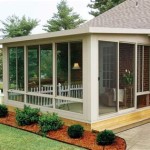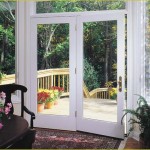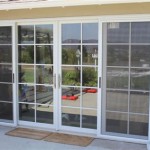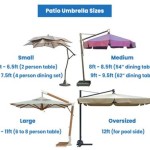Selecting the Right Outdoor Patio Dining Table With Umbrella Hole
An outdoor patio dining table with an umbrella hole is a quintessential element of outdoor living, facilitating comfortable al fresco dining and relaxed social gatherings. The selection of such a table requires careful consideration of several factors, including material durability, size and shape, aesthetic appeal, and the specific functionality of the umbrella hole itself. This article provides a comprehensive guide to assist individuals in making informed decisions when purchasing an outdoor patio dining table with an umbrella hole.
Material Durability and Weather Resistance
The material composition of an outdoor patio dining table is paramount to its longevity and ability to withstand the rigors of outdoor exposure. Different materials offer varying levels of resistance to environmental elements such as sunlight, rain, wind, and temperature fluctuations. Understanding the properties of common materials is crucial for selecting a table that will adequately serve its purpose for an extended period.
Wood: Wood tables offer a classic and aesthetically pleasing look. Teak, cedar, and redwood are popular choices due to their natural resistance to rot and insects. Teak is particularly prized for its high oil content, which acts as a natural sealant. However, even with these naturally resistant species, regular maintenance, such as oiling or sealing, is necessary to prevent weathering, cracking, and fading. Untreated wood will gray over time, which may be desired by some but is an unavoidable consequence of prolonged sun exposure. Softwoods, like pine, are generally less expensive but require significantly more treatment and are more susceptible to damage.
Metal: Metal tables, including those made of aluminum, steel, and wrought iron, are generally very durable. Aluminum is lightweight and rust-resistant, making it a practical choice for many climates. Powder-coated aluminum provides even greater protection against the elements. Steel is heavier and stronger than aluminum but is prone to rust. Wrought iron is exceptionally heavy and sturdy, providing excellent stability, especially in windy conditions. However, it requires regular painting or powder-coating to prevent rust formation. Stainless steel offers superior corrosion resistance but is typically more expensive.
Resin/Plastic: Resin or plastic tables are often the most affordable option and are relatively lightweight and easy to clean. High-density polyethylene (HDPE) is a common material that offers good resistance to weathering and fading. Recycled plastic options are also becoming increasingly popular, providing an environmentally conscious choice. However, plastic tables can sometimes lack the aesthetic appeal of wood or metal and may be less durable in extreme weather conditions. Lighter plastic tables can also be susceptible to being blown over by strong winds.
Stone/Concrete: Stone or concrete tables provide exceptional durability and a unique aesthetic. They are extremely heavy and stable, making them ideal for areas prone to high winds. However, their weight also makes them difficult to move. Concrete tables, in particular, can be porous and require sealing to prevent staining and water damage. Stone options, such as granite or marble, are more resistant to staining but are also more expensive.
Size, Shape, and Seating Capacity Considerations
Choosing the appropriate size and shape of an outdoor patio dining table is critical for optimizing the available space and ensuring comfortable seating for the intended number of users. The dimensions of the patio area, the number of people typically dining, and the desired aesthetic all play a role in this decision.
Round Tables: Round tables promote conversation and a sense of inclusivity, as everyone is equidistant from each other. They are well-suited for smaller patios or for creating a more intimate dining experience. The diameter of the table should be chosen based on the number of chairs needed. A general guideline is to allow at least 24 inches of space per person. However, avoid placing large round tables in narrow or rectangular patios, as this can hinder movement.
Square Tables: Square tables offer a more formal and symmetrical look. They are a good choice for smaller groups or for creating a defined dining area. Like round tables, they promote conversation among diners. The side length of the table should be sufficient to accommodate the desired number of chairs. Considerations for space per person remain the same as with round tables.
Rectangular Tables: Rectangular tables are the most common choice for outdoor dining, particularly for larger groups. They offer a more traditional and formal aesthetic and can accommodate more diners than round or square tables of comparable surface area. The length of the table should be proportional to the width of the patio space. It is crucial to allow ample space around the table for chairs to be pulled out and for people to move freely.
Oval Tables: Oval tables combine the benefits of round and rectangular tables. They provide a more elongated surface area like rectangular tables but without the sharp corners. This can make them a good choice for families with children or for patios where space is limited. The seating capacity will depend on the length and width of the oval.
Beyond the shape, consider the table's height. Standard dining tables are typically around 28-30 inches high. Counter-height tables are taller, usually around 34-36 inches, and require counter-height chairs or stools. Bar-height tables are the tallest, around 40-42 inches, and are ideal for casual dining or cocktail parties.
Umbrella Hole Functionality and Compatibility
The umbrella hole is a key feature of an outdoor patio dining table, providing shade and protection from the sun and light rain. Ensuring the umbrella hole is properly sized, constructed, and compatible with standard umbrellas is crucial for optimal functionality and safety. The hole must accommodate both the umbrella pole’s diameter and the umbrella base’s stability.
Hole Diameter: The standard diameter for an umbrella hole is typically 2 inches. However, it is essential to verify the specific diameter before purchasing an umbrella. Some tables may have smaller or larger holes to accommodate specific umbrella models. It is generally better to have a slightly larger hole than a slightly smaller one, as adapters can be used to secure a smaller umbrella pole in a larger hole. Measure the diameter of your umbrella pole at the point where it will pass through the table. A good rule of thumb is to allow for approximately 1/4" clearance to allow insertion and removal without unnecessary friction.
Reinforcement and Stability: The area around the umbrella hole should be reinforced to prevent cracking or damage to the table surface, especially in materials like wood or plastic. Metal rings or sleeves are often used to provide additional support. Ensure that the table base is stable enough to support both the table itself and the umbrella, especially in windy conditions. A heavy table base and a sturdy umbrella base are essential for preventing the table and umbrella from tipping over. The umbrella base should be heavy enough to support the open umbrella. Consider a weighted base, or a base that can be filled with sand or water for increased stability.
Placement and Accessibility: The location of the umbrella hole within the table surface is also important. It should be centered on the table to provide consistent shade coverage. The area around the hole should be easily accessible for inserting and removing the umbrella pole. Some tables may have a cap or cover that can be used to close the hole when an umbrella is not in use. This helps to prevent debris from falling into the hole and provides a cleaner aesthetic. Consider the ease of access to the hole when sitting at the table. A poorly placed hole can make it difficult to insert the umbrella.
Umbrella Height and Clearance: Ensure that the umbrella height is appropriate for the table and seating arrangement. The bottom of the umbrella should be high enough to provide adequate clearance for diners to sit comfortably without hitting their heads. Factors such as adjustable height umbrellas can mitigate this issue. Consider the amount of shade provided by the umbrella. Larger umbrellas provide more shade, but they also require a heavier base. Articulating umbrellas with adjustable angles permit more flexible shade management.
Choosing an outdoor patio dining table with an umbrella hole is a decision that blends practical requirements with stylistic preferences. By carefully evaluating material durability, size suitability, and umbrella compatibility, individuals can select a table that enhances their outdoor living space and provides years of enjoyment.

Laurel Canyon Rectangular Aluminum Outdoor Dining Table With Umbrella Hole Lcalurec The Home Depot

Outdoor Stainless Steel Rectangle Dining Table With Umbrella Hole Captiva Designs Target

Phi Villa Black Square Metal Patio Outdoor Dining Table With 1 57 Umbrella Hole And Wood Look Tabletop Thd E02gf060 5 The Home Depot

Phi Villa 37 Patio Bistro Metal Steel Slat Table With Umbrella Hole

Round Patio Dining Table With Umbrella Hole Black Captiva Designs Target

8pc Outdoor Dining Set With Metal Slat Top Table Umbrella Hole Swivel Chairs Gray Beige Captiva Designs Target

Summit Teak Outdoor Dining Table With Umbrella Hole

Phi Villa Rectangle Metal 1 57 In Patio Outdoor Dining Table With Umbrella Hole Thd Pv 326n The Home Depot

Grand Patio Outdoor 42 Metal Dining Table Round With 1 5 Umbrella Hole Rust Free Steel

Phi Villa Wood Look Rectangle Patio Dining Table With Umbrella Hole
Related Posts








